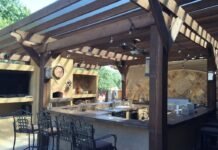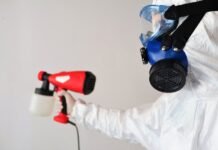Last Updated on July 7, 2023 by
In 2017, roofing systems in North America made up a $29.86 billion market. Come 2025; market analysts project that to expand by almost 1.6 times to reach a size of $47.51 billion. New constructions and building improvements, in turn, will fuel that growth. On top of these is the increasing awareness of how faulty roofs can give rise to health and safety risks. Water damage from leaking roof systems is one way for such threats to arise. This guide lists the top repercussions of unaddressed water leaks, so be sure to read on.
Table of Contents
1. Damaged Building Components
Water dripping from a roof usually starts working its way into roof insulation first. From there, the water drips onto the ceiling and then seeps into the attic, if you have one. If you don’t have an attic, the water could affect the area right beneath the roof.
As water from the leaky roof travels, it wets everything in its path. For example, it can cause your roof insulation to clump, rendering it ineffective. From there, it can saturate porous attic and ceiling materials, such as wood boards or planks.
Over time, the water-damaged parts can lose their rigidness, compromising their stability. This can then lead to their buckling, warping, or worse, caving in. Collapsing materials are a serious safety risk you never want to be present in your home or office.
So, if you notice your roof leaks in heavy rain, it’s best to start your online search for a “roofing contractor near me.” Do the same as soon as you see water stains on the ceiling or if your attic feels muggy. It’s even more crucial to get in touch with a roofer if you see actual pools of water on the floor right below the roof.
2. Mold and Mildew Damage
Early surveys suggest that about half of homes in the US have a dampness or mold problem. Plumbing and roofing leaks, in turn, are some of the most common culprits.
After all, molds thrive in moist environments, so long as they have access to food and oxygen, too. The same goes for mildew, which refers to certain mold or fungal species. Under such conditions, these microorganisms can grow and spread within just a day or two.
Molds and mildew can then cause or exacerbate the water damage in walls of houses from roof leaks. That’s because they feed on organic matter, causing materials to break down over time. They also create unsightly, even disgusting markings on ceilings, walls, and floors.
3. Health Risks
Mold and mildew alone can pose health risks due to the microscopic spores they expel into the air. They can be especially harmful to individuals with mold allergies. That’s a lot, as one in four people with allergies has specific mold allergies.
Moreover, excessive indoor moisture can attract pests, such as cockroaches, rodents, and termites. These critters can further cause poor indoor air quality with their excrements. Worse, when they die, their bodies will harbor bacteria that will break down their corpses.
The fact alone that pests are vectors of diseases should be enough reason to keep them out of your home. After all, vector-borne diseases claim approximately 700,000 lives worldwide each year.
Since roof leaks can attract those pests, it’s best to stop water leakage from roof damage ASAP.
Never Underestimate the Risks of Water Damage from Leaking Roof
As you can see, there are far too many dangers associated with water damage from leaking roof systems. So, as early as now, have your roof inspected so that a licensed roofer can repair leaks before they get worse. By getting those leaks fixed now, you can prevent more damage, as well as health and safety concerns.
Interested in more home or office improvement guides like this? Please feel free to have a look at our latest news and blog posts, then!
Apart from that, if you are interested to know about Regular Roof Maintenance in Vancouver then visit our Home Improvement category.























